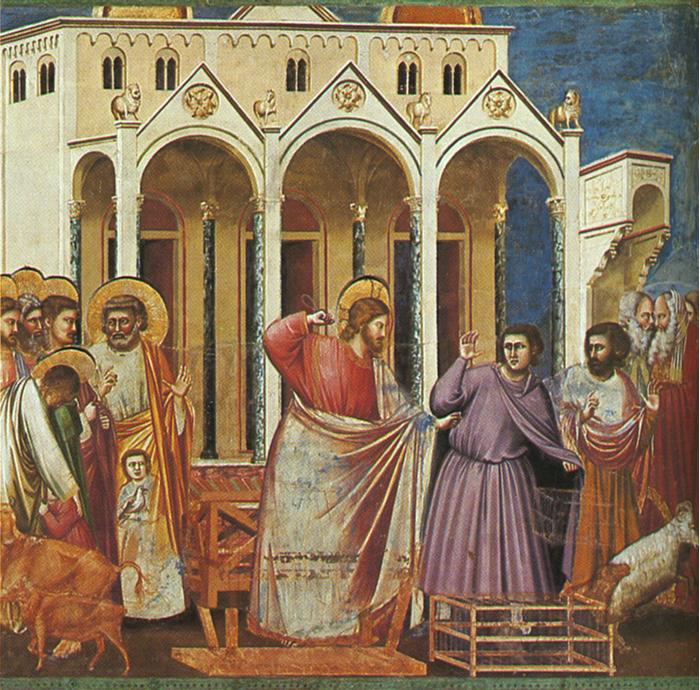- Goose
- Cogito ergo sum
 Offline
Offline 
- Registered: 1/29/2015
- Posts: 13,427
Scrovegni Chapel
Scrovegni Chapel
The Scrovegni Chapel (Italian: ''Cappella degli Scrovegni'', also known as the Arena Chapel), is a church in Padua, Veneto, Italy. It contains a fresco cycle by Giotto, completed about 1305 and considered to be an important masterpiece of Western art. The nave is 20.88 metres long, 8.41 metres wide, and 12.65 metres high. The apse area is composed of a square area (4.49 meters deep and 4.31 meters wide) and a pentagonal area (2.57 meters deep).
Giotto and his team covered all the internal surfaces of chapel with frescos, including the walls and the ceiling. The largest element is extensive cycles showing the Life of Christ and the Life of the Virgin. The wall at the rear of the church, through which the chapel is entered, has a large Last Judgement. There are also panels in grisaille (monochrome) showing the Vices and Virtues.
Building and decoration[edit]
Cast of Giovanni Pisano's effigy of Enrico Scrovegni, in the chapel
The Arena Chapel was commissioned from Giotto by the affluent Paduan banker, Enrico Scrovegni. In the early 1300s Enrico purchased from Manfredo Dalesmanini the area on which the Roman arena had stood. Here he had his luxurious palace built, as well as a chapel annexed to it. The chapel's project was twofold: to serve as the family's private oratory and as a funerary monument for himself and his wife. Enrico commissioned Giotto, the famous Florentine painter, to decorate his chapel. Giotto had previously worked for the Franciscan friars in Assisi and Rimini, and had been in Padua for some time, working for the Basilica of Saint Anthony in the Sala del Capitolo and in the Blessings's Chapel.
A number of 14th-century sources (Riccobaldo Ferrarese, Francesco da Barberino, 1312-1313) testify to Giotto's presence at the Arena Chapel's site. The fresco cycle can be dated with a good approximation to a series of documentary testimonies: the purchase of the land took place on 6 February 1300; the bishop of Padua, Ottobono dei Razzi, authorised the building some time prior to 1302 (the date of his transferral to the Patriarcato of Aquileia); the chapel was first consecrated on 25 March 1303, the feast day of the Annunciation; on 1 March 1304 Pope Benedict XI granted an indulgence to whoever visited the chapel; one year later on 25 March 1305 the chapel received its definitive consecration. Giotto's work thus falls in the period from 25 March 1303 to 25 March 1305.



We live in a time in which decent and otherwise sensible people are surrendering too easily to the hectoring of morons or extremists.
- Just Fred
- Duke of Cortona
 Offline
Offline 
- Registered: 1/29/2015
- Posts: 3,863
Re: Scrovegni Chapel
It's a "must see" for anyone interested in art history. Giotto single-handedly broke the mold moving art away from the medieval style while making stories from the Bible 'real'.
 1 of 1
1 of 1